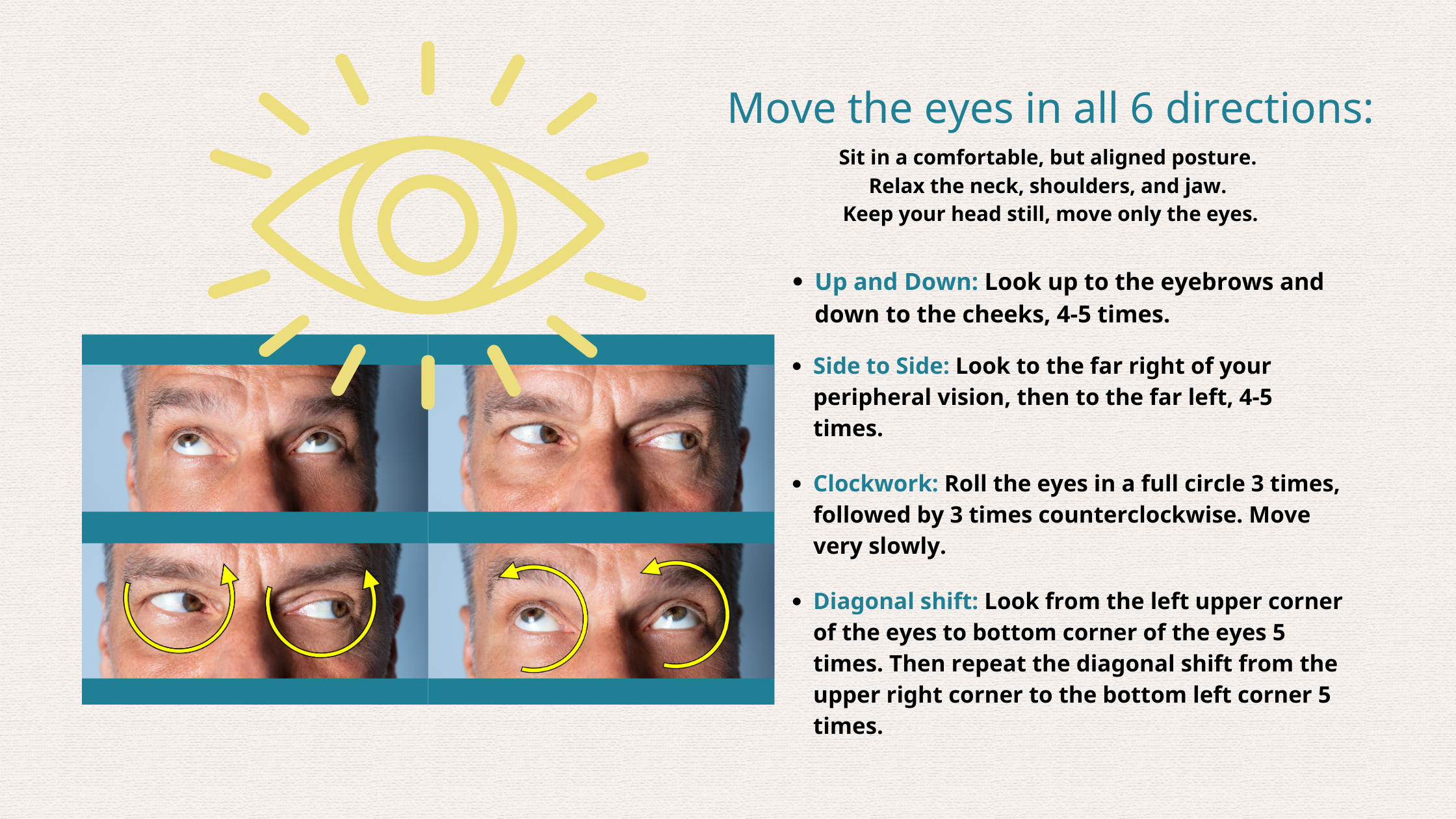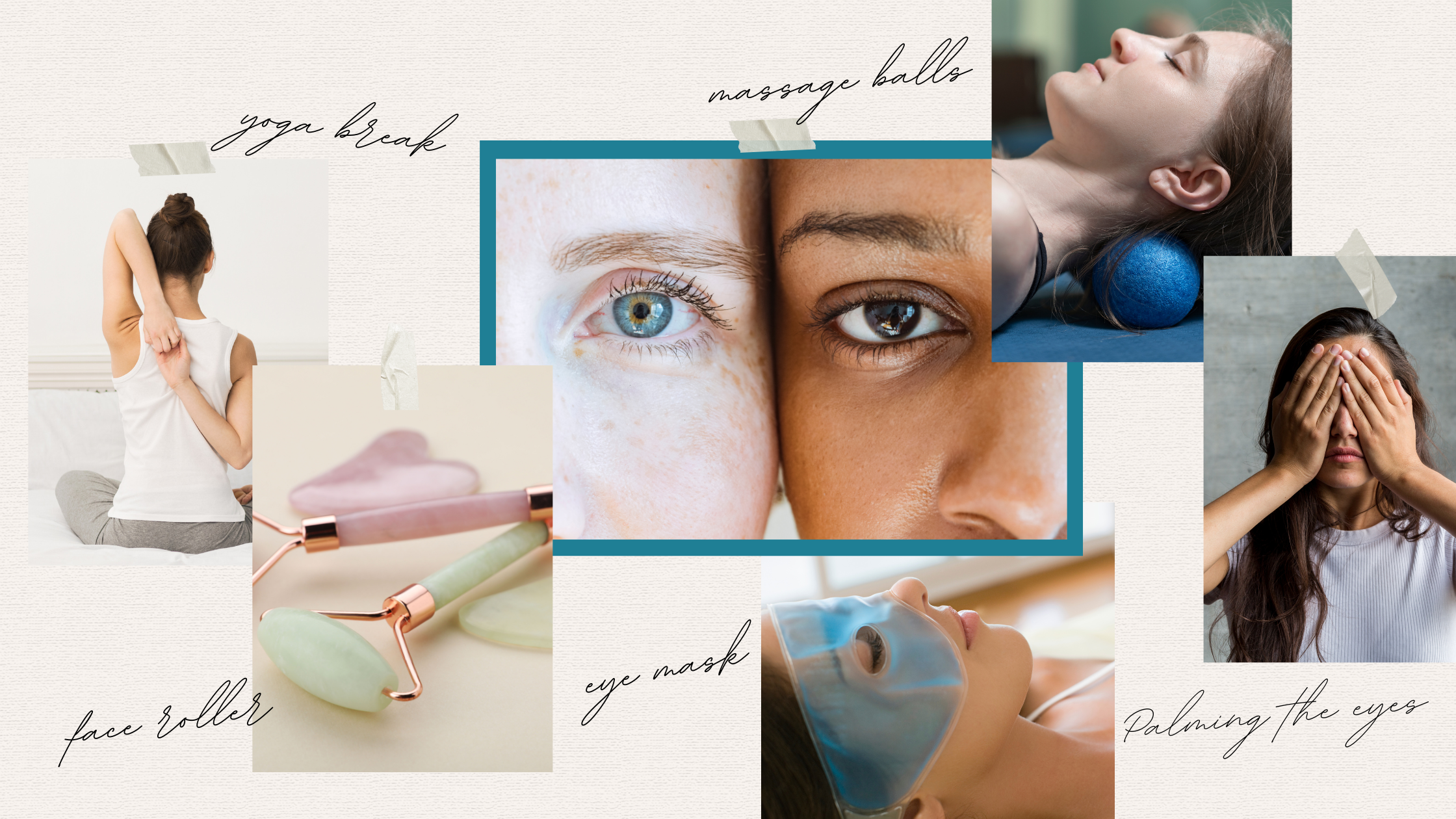Through the Lens of Ayurveda: Unveiling the Connection Between Stress and Eye Health.
Learn how to counter the modern plague of digital fatigue and fortify your visual well-being.
Digital fatigue, as a modern day phenomenon, is an unassuming contributor to both our eye and mental health. Whether you finish the day at your desk feeling drained, wind up with a headache or develop an eye twitch that just won’t back down-- too much screen time is a culprit. Neglecting the senses whether through overuse, or misuse—can contribute to physical and mental imbalances. In this context, incorporating practices that counteract the effects of eye strain and modern lifestyles, becomes vital to our well-being. Sensory self-care, not only nourishes the senses, but helps manage exhaustion, stress, and anxiety.
This connection between stress, vision, and self-care unveils a remarkable interplay between our physiological and psychological responses. Staring at one point for extended periods of time can trigger a primal stress response in the body. Our pupils dilate, as our focus narrows on one single point, blurring everything in the background. We are holding our gaze intensely at a target as if it were prey or predator. This "fight-or-flight" activation leads to the release of adrenaline and cortisol. Elevated stress hormones can affect the normal blood flow between the eyes and the brain, contributing to vision problems.
Sensory self-care: Mindful eye movements to Enhance your vision.
Yoga and Ayurveda share a wellness ritual for the eyes that can be done both in the morning and night to nourish the eyes and nurture the inner vision of our third eye. OR anytime you can take a 20 minute break from working at the computer.
Tone the Eyes:
To stimulate blood flow, utilize cooling and soothing remedies. Splash cold water over the eyes 5-10 times. You can do this first thing in the morning or anytime your eyes feel tired. It can be a great way to take a break from the computer. Taking a 5 minute break to rest with two cool cotton pads soaked in rosewater.
Keep a hydration mister of rosewater in the fridge. You can mist yourself throughout the day for a pick me up or use it to soak the cotton pads. Sliced cold cucumbers are always an easy go-to.
Palm the eyes:
Briskly rub your hands together creating heat in the palms. When the hands feel nice and warm cup the palms over the eyes and create a dark cave. Let the warmth penetrate the eyes.
A warm compress, either a washcloth or eye mask, can provide the same soothing relief. The gentle heat reduces tear evaporation and lubricates dry eyes.
Blink and Contraction:
Quickly flutter the eyelashes 10 times, then rest for 5 seconds. Repeat for a total of 30 blinks.
Contraction: Then follow with a 10 second contraction. Tightly closing the eyes and slowly releasing the squeeze. End with one more round of blinking.
Move the eyes in all 6 directions:
Sit in a comfortable, but aligned posture. Relax the neck, shoulders, and jaw. Keep your head still, move only the eyes.
Up and Down: Look up to the eyebrows and down to the cheeks, 4-5 times.
Side to Side: Look to the far right of your peripheral vision, then to the far left, 4-5 times.
Clockwork: Roll the eyes in a full circle 3 times, followed by 3 times counterclockwise. Move very slowly.
Diagonal shift: Look from the left upper corner of the eyes to bottom corner of the eyes 5 times. Then repeat the diagonal shift from the upper right corner to the bottom left corner 5 times.
This can be enough to give the eyes a break, but for a more complete practice add these two exercises. Working with focal and panoramic vision, by shifting your gaze from one point to another. Sit nice and tall on the mat or in a chair, extend the right arm and hold up one of your thumbs as if you are hitchhiking. Use the thumb as your main object of focus.
Nose-tip Gazing (Nasikagra Drishti) :
Fully extend your arm directly in front of you, holding the arm at nose level. Gaze at the thumb. Inhale and begin to slowly draw your thumb in toward the tip of your nose. Let your gaze follow the thumb all the way in until it feels like you’re looking at the tip of your nose. Exhale, next follow the thumb as you the arm slowly back to it’s original position with the arm fully extended. Practice for 5 rounds.
Near and Distant Viewing:
Fully extend the arm in front of you at nose level. Gaze at the tip of the thumb for 5 seconds as you inhale. On the exhale, shift your gaze from the thumb widening your focus to include a panoramic view of a still object off in the distance. Next shift back to the narrow focus of your thumb. Continue shifting your focus back and forth 10 times.
Close the eyes and relax. You can take a round of palming, letting the warmth of the hands relax the muscles of the eyes. Recline in Savasana and rest for a few additional moments.
From Gaze to Grace: 5 Secrets for Soothing Eyes and Easing Stress.
Take a yoga stretch break for the neck and shoulders.
Try massage balls or a still point inducer at the base of the skull to release any tension building at the suboccipital muscles.
Use a face roller to massage the brow and jaw.
Take a bare foot walk so the reflex points on the feet get activated.
Use a heated eye mask to soothe and lubricate the eyes.
Drishti: Illuminating Vision from Within
Ancient Ayurvedic provides a unique understanding of the relationship between eye movements, stress reduction, and sensory self-care. In Ayurveda, sight is associated with the element of fire, Tejas. It’s through our sense of sight that we begin to metabolize our life experiences. As our organs of cognition and reception, our senses serve as bridges between the internal and external, shaping our perception of everything we take in.
In nurturing our senses, we nurture our connection to the world and to ourselves. Drishti, which translates to "eyes" in Sanskrit, can refer both to where we place our visual gaze and even more subtly where we focus our energetic intention. Our vision goes beyond seeing only what is in front of us, it creates our depth of knowing. Not only taking in everything around us, but allowing us to peer into the realms of intuition - - from vision to visionary.
Contra-Indications: Please note that individuals with major eye diseases or disorders, including glaucoma, trachoma, cataracts, retinal detachment, retinal artery or vein thrombosis, iritis, keratitis, or conjunctivitis, should seek consultation from an eye specialist before engaging in these yoga practices.





